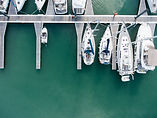Marine VHF Communications
- Lenny Fourie

- Apr 26, 2020
- 4 min read
Updated: Jun 1, 2020
A means of calling for help in the event of an onboard emergency is essential for all boaters.

VHF radio is still the preferred method of communication, and a critical piece of safety equipment that should be considered by everyone intending to go on the water. Whether you are using our oceans, rivers and inland waterways for commercial activity, recreation, or just for fun, a VHF radio can be used to communicate with other boats, marina operators, Lifeguards, Coast Guard Stations and Search and Rescue Authorities. Knowing how to use it could save the life of you and other water users, so read the owner’s manual for your radio and become familiar with its functions.
VHF Antenna

The carriage of at least a handheld VHF is in most cases practical, and a handheld will suffice when only a limited range is required. A fixed mount VHF can allow a transmission range of up to 20 – 40 miles depending on the installation, vessel heel angle and sea conditions. Since VHF radios operate with a line of site principal – meaning the signal won’t transmit through or around buildings or other natural obstructions – it’s important to mount the antenna as high as possible. After installing the antenna as high as practical, the next way to increase the range is to increase the gain. Gain is measured in decibels (dB) and, generally speaking, the higher the gain, the greater the range.
Should you lose your antenna, your VHF will be of little use to you unless you carry an emergency VHF antenna, which you can then fit to re-instate your communications.
Regulation
The Marine Radio Short Range Certificate (SRC) is the minimum qualification required to operate marine VHF radio equipment. This includes both fixed and handheld equipment with and without Digital Selective Calling (DSC). It is obtained by successfully completing an SRC exam conducted at an RYA or ISA Recognised Training Centre.
All GMDSS-fitted Ships and Coast Stations have a unique 9-digit identification number, known as its Maritime Mobile Service Identity number (MMSI). This can be thought of as it's 'telephone' number.
UK registered vessels start with the digits 232, 233, 234 or 235 (as in 232000001).
Irish registered vessels start with the digits 250, (as in 250000001).
UK Coastguard Stations start with the digits 00232, (as in 002320001).
Irish Coastguard Stations start with the digits 00250, (as in 002500001).
All new fixed mount VHF radios sold in the EU must be at least DSC capable in order to conform to the requirements of the Global Maritime Distress and Safety System (GMDSS) . This means that a fixed mount VHF must have the ability to transmit a digital distress message, known as Digital Selective Calling (DSC). This distress message must include as a minimum, identification, in the form of an MMSI and position information, from a connected or built in GPS, in latitude and longitude. Also known as an Undesignated Distress Alert.
Using a VHF Radio in case of Emergency
There are three types of Emergency transmission messages, or alerts, known as Distress, Urgency and Safety.
A Distress is sent when a person or craft is in grave and imminent danger and requires immediate assistance. A complete Distress transmission is made up of 3 parts.
1. Alert
This is sending your message using DSC on Channel 70. On most modern sets using the DISTRESS button on the front of your fixed mount VHF, will send an undesignated alert. Wait for an acknowledgement from the Coast Guard on Ch70. Once acknowledged, most sets will automatically switch to Channel 16 and you may then follow with a voice call.
2. Call
At this point you will need to transmit a voice call by pushing and holding the Push to Talk (PTT) button on the side of the fist mic. This should be delivered in the following format, Mayday x3, Vessel Name or Identification x3, Call sign and MMSI. Now proceed with your message.
3. Message
The message includes important information such as, your position, nature of distress, type of assistance required, number of people on board, and any other information that may be useful or important.
A good way to remember the sequence of a distress transmission is by the use of the mnemonic
‘MIRPDANIO’ M Mayday x 3 I Identity x 3 + Call Sign + MMSI R Repeat Mayday and identity once + Call Sign + MMSI P Position D Nature of Distress A Type of Assistance Required N Number of persons aboard I Any other information O Over
An Urgency call and message indicates that a very important message is to follow concerning the safety of a ship, aircraft, vehicle or person.
An urgency message is the second most important in order of priority calls and messages, below distress and must be authorised by the person in charge of the vessel.
A Safety transmission indicates that an important meteorological or navigational message is to follow. The safety transmission is the third most important in the priority order after Distress and Urgency.
As always, if you have DSC, the correct alert should be sent on Ch70 first, followed by voice on CH16. Note that navigation warnings from ships are usually sent over VHF, because navigational information is usually only of interest to shipping within the vicinity of the navigation danger.
When going on or near the water, check the weather and tides, and always carry a means to call for help. Have your equipment tested regularly to insure it will work when you need it most. Contact us to request a booking, and we'll arrange an on board inspection of your communication equipment.








Comments